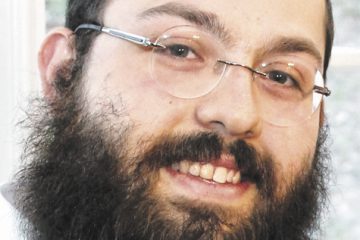‘Light with joy and gladness and honor’
Religion, March 2011
By Rabbi Samuel B. Press, Rabbi Emeritus, Beth Abraham Synagogue
As we approach the observance and celebration of Purim, I choose to share selected thoughts on the holiday, ideas which may serve as a catalyst for our own reflections.
| Rabbi Samuel B. Press |
The lodestone which initiates my observations are the beautiful words of Rav Kook, of blessed memory. Rav Kook wrote, “We need to renew the old, and sanctify the new.”
His words remind that tradition — the past — is vital to our survival as a people.
But so too, in his pluralistic expression, “sanctify the new,” there need be creative expressions in responding to the present.
Judaism has always expounded as an ideal the concept of “unity in diversity.”
This ideal was evident in the Purim events the synagogues, with Federation, presented to the community, in our past.
We respected the diversity of our beliefs and practices. We worked in concordance and appreciation of our differences.
We arranged for Purim to be celebrated at Sinclair Community College, the Boonshoft Museum of Discovery, and also at our synagogues each year.
Every expression of Judaism preceded the joint celebration. We gathered, arranged services for Traditional, Chabad, Conservative, Reform, and egalitarian needs. After the services, we joined in entertainment, dinner, and common bonding.
The success of this Purim program became a paradigm for cooperation, love and bonding for Jewish communities in our country. Rabbis, synagogues and the Federation not only worked together, but had affection and deep appreciation in profound, lasting friendships.
In our community, we established the Synagogue Forum, joint educational endeavors, classes taught in programs. We also had a communal conversion program. Each rabbi would work and have conversion ritual according to his/her convictions.
History records the generous programs we initiated and successfully accomplished. We provided not only for the Jewish, but total community for food kitchens, provisions for the needy, and organizational involvement.
Our past, too, reminds that the present is not the same as our past. Dayton had a larger Jewish population. Synagogues were packed on the holidays. I recall Beth Abraham having more than 1,500 people on Rosh Hashanah and Yom Kippur.
Shabbat attendance was close to 200. When we had Cantor Jerome Kopmar’s internationally known choir — with children from every congregation — our monthly choral Shabbat service was between 300 to 500, with more then a hundred remaining for lunch and a dvar Torah by the rabbis.
Each congregation has a strong, vibrant past with similar recall of strength.
Now, we no longer have the population as then. We have competing life moments, which were not in our past.
We need to sanctify our moment in time with passion, and love for the values which inspired our leaders and community, and are eternal.
As Purim defines this unity with bonding, so too our communal leaders understood that Judaism preaches not dissension but love and harmony.
We merged together, not giving up of the self but merging into a larger self, caring for the weal and welfare and preservation of what Purim teaches and what Judaism expounds: a loving, harmonious community.
Competitiveness, disparagement, denigration were words not in our vocabulary. We disagreed, agreeably. Politics, Israel, human rights were all on our agenda.
We, as Buber once wrote, listened to one another to learn, not to win points with ad hominem pejorative words.
We can renew the past by sanctifying our present with similar motivation.
The word Purim means “lots.” Chance and the unexpected are our common lot. Life is not a prepared agenda. We each find chaos, loneliness, sadness, and despair. We also find joy and happiness and meaning.
God is missing in the open text of this book. We search for God to give strength and guidance and support. It is not the unexpected we control, but how we respond. What is or was are beyond our control.
We can determine our future. Our faith reminds that God is present, albeit often hidden. And we can hope and act. The Purim story sees a narrative where individuals can make a difference.
Vashti, contrary to common perception, was heroic. The first wife of King Ahashverus in the Purim narrative knew how to say no. She refused her husband’s command to parade naked, “to show her beauty to the nations and ministers.” She had a sense of self and wouldn’t be molded into a lesser role as a woman.
Esther, rabbis underscore, had not only physical but inner beauty. She dismissed the adornments. Her magnetic attraction was her character and strength. A rabbi defined Esther as a person who had developed self-esteem.
And this too is our need. Relationships need to nurture the esteem of the related.
Purim speaks of friendship obtained, not through getting, but through giving. It obligates us to seek out and protect the disadvantaged.
A lonely person is disadvantaged. The abused are disadvantaged. The unemployed are disadvantaged. The list continues.
Purim’s message is crucial in our day. We live in an age of disillusionment, anger, inner rage (often from own inadequacies) and we act with rancor in our voices, words and the hubris to be dismissive of another.
We can use Purim to expand our moral imaginations, to listen to each other more carefully, to sharpen our instinct for empathy, and remind ourselves of all the ways our hopes and dreams are bound together.
Purim is our moment to renew the old and sanctify our moment in time. We are empowered to be the change we want to see.
“For the Jews, there was light with joy and gladness and honor.” — Book of Esther, 8:16.





